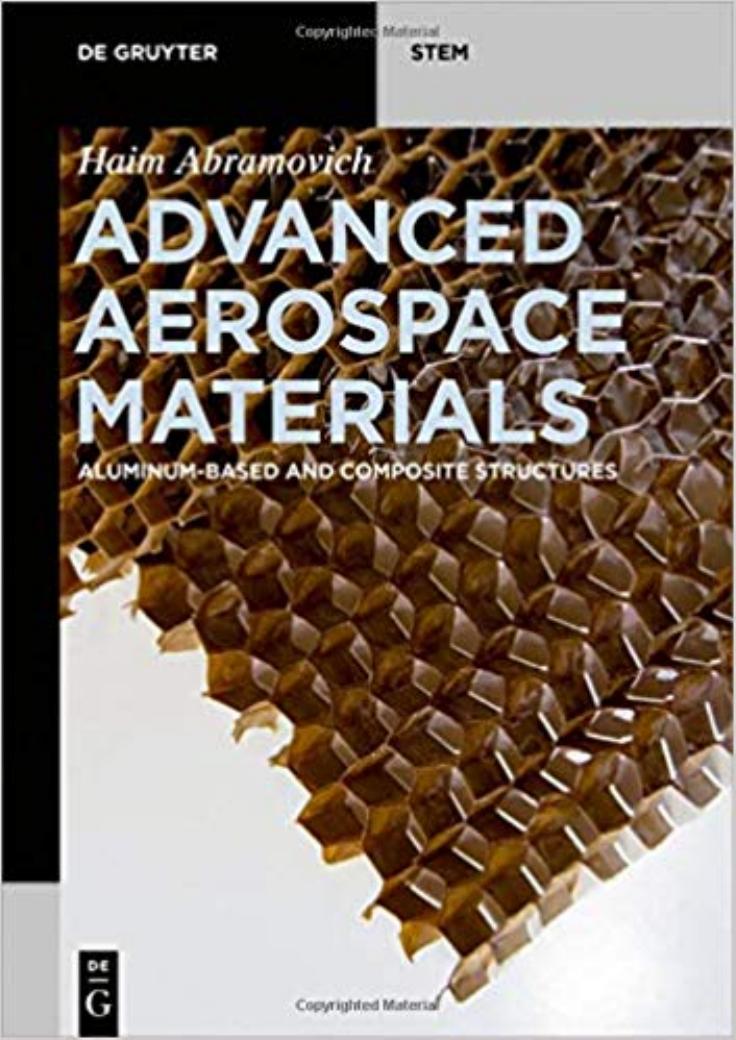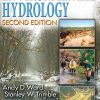Advanced Aerospace Materials 1st edition by Haim Abramovich 3110537567 9783110537567
$70.00 Original price was: $70.00.$35.00Current price is: $35.00.
Instant download Advanced Aerospace Materials after payment
Instant download Advanced Aerospace Materials pdf, docx, kindle format all chapters after payment. 3110537567, 9783110537567

Product details:
ISBN 10: 3110537567
ISBN 13: 9783110537567
Author: Haim Abramovich
Advanced Aerospace Materials is intended for engineers and students of aerospace, materials, and mechanical engineering. It covers the transition from aluminum to composite materials for aerospace structures and will include essential and advanced analyses used in today’s aerospace industries. Various aspects of design, failure and monitoring of structural components will be derived and presented accompanied by relevant formulas and analyses.
Table of contents:
1 Introduction
1.1 Introduction
1.2 Aerospace structures
1.3 Aerospace structures – transition to composite materials
1.4 Basic topics in elasticity
1.4.1 Stresses, strains and rigid body rotations
1.4.2 Equilibrium and compatibility equations in elasticity
1.4.3 Plane stress and plane strain (2D representations)
1.4.4 The Airy function ϕ(x,y)
1.4.5 Thermal field
2 Composite materials
2.1 Introduction
2.1.1 General introduction
2.2 Unidirectional composites
2.3 Properties of a single ply
2.4 Transformation of stresses and strains
2.5 The classical lamination theory
2.6 First-order shear deformation theory
2.7 Higher order theories
3 Design formulas
3.1 Introduction
3.2 Airy functions
3.3 Distribution of the shear forces, moments, deflections and slopes for beams
3.4 Natural frequencies for common basic structures
3.5 Torsion of bars
4 Introduction to fatigue
4.1 Introduction
4.2 Definition of fatigue
4.2.1 Basic fatigue concepts
4.2.2 The four steps of fatigue failure
4.3 The S–N curve
4.3.1 The probability distributions for fatigue life
4.3.2 Fatigue life for various combinations of alternating and mean stresses
4.4 Miner rule – the cumulative damage
4.5 Fatigue of composite materials
Appendix A: Application of Fig. 4.6 and its associated equations
5 Introduction to crack propagation analysis
5.1 Introduction
5.2 Foundations of fracture mechanics
5.2.1 Introductory concepts
5.2.2 Basic failure modes
5.2.3 The stress intensity factor, K
5.2.4 The energy release rate, G
5.2.5 The J-integral
5.2.6 The crack opening displacement
5.2.7 Some closure notes
5.3 Fatigue crack propagation
5.3.1 Introductory concepts
5.3.2 The Paris law
5.3.3 Experimental fracture mechanics
6 Buckling of thin-walled structures
6.1 Introduction
6.2 Buckling of columns
6.2.1 Euler buckling
6.2.2 Rankin–Gordon formula
6.2.3 Composite columns – CLT approach
6.3 Buckling of columns – FSDT approach
6.4 Buckling of plates
6.4.1 Buckling of isotropic plates
6.4.2 Buckling of orthotropic plates
Appendix A: Nonsymmetric laminated composite beam – CLT approach
7 Vibrations of thin-walled structures
7.1 Introduction
7.1.1 CLPT approach
7.1.2 FSDPT approach
7.2 Vibrations of columns – CLT approach
7.2.1 Symmetric laminate (B11 = 0, I1 = 0)
7.2.2 Nonsymmetric laminate (B11 ≠ 0, I1 ≠ 0)
7.3 Vibrations of columns – FSDT approach
7.3.1 Symmetric laminate (B11 = 0, I1 = 0)
7.3.2 Nonsymmetric laminate (B11 ≠ 0, I1 ≠ 0)
7.4 Vibrations of plates – CLPT approach
7.4.1 Simply supported special orthotropic plates
7.4.2 Simply supported on two opposite edges of special orthotropic plates
Appendix A: General solution for a nonsymmetrical beam resting on any boundary conditions
Appendix B: Matrix notation for the equilibrium equations using CLT approach
Appendix C: The terms of the matrix notation for the equilibrium equations using FSDPT approach
8 Dynamic buckling of thin-walled structures
8.1 Introduction
8.2 Dynamic buckling of columns
8.2.1 Dynamic buckling of columns using CLT
8.2.2 Dynamic buckling of columns using FSDT
8.3 Dynamic buckling of plates
8.4 Dynamic buckling of thin-walled structures – numerical and experimental results
Appendix A: Calculation of the critical buckling load of a uniaxial loaded plate from test results
9 Optimization of thin-walled structures
9.1 Introduction
9.2 The optimization process
9.2.1 Vocabulary and concepts
9.3 Structural optimization
9.4 Multidisciplinary and multiobjective design optimization
9.5 Methods of optimization
9.6 Classical optimization techniques
9.7 Numerical methods of optimization
9.7.1 Linear programming
9.7.2 Integer programming
9.7.3 Nonlinear programming
9.7.4 Quadratic programming
9.7.5 Stochastic programming
9.7.6 Dynamic programming
9.8 Advanced optimization techniques
9.8.1 Hill climbing
9.8.2 Simulated annealing
9.8.3 Genetic algorithms
9.8.4 Ant colony optimization
9.8.5 Neural network optimization
9.9 Gradient-based methods
9.9.1 Unconstrained methods
9.9.2 Constrained methods
9.10 Heuristic methods
9.10.1 Tabu search
9.11 Optimization of topology of aerospace structures
9.12 History of topology optimization
9.13 Density-based methods
9.14 Hard-kill methods
9.14.1 Evolutionary structural optimization methods
9.15 Boundary variation methods
9.15.1 Level-set methods
9.15.2 Phase field method
9.16 Recently developed methods
9.16.1 Bio-inspired cellular division-based method
9.17 Applications in the aerospace field
9.17.1 General topology optimization applications
9.17.2 Applications of density-based methods
9.17.3 Applications of hard-kill methods
9.17.4 Applications of boundary variation methods
9.17.5 Applications of bio-inspired cellular division-based method
9.18 Conclusions
Appendix A: Response surface methodology
A1 Design of experiments and design of computer experiments
10 Structural health monitoring (SHM)
10.1 Introduction
10.1.1 Diagnosis
10.1.2 Damage prognosis
10.1.3 Predictive maintenance
10.2 Applications
10.2.1 Aerospace applications
10.2.2 Civil applications
10.2.3 General applications
10.3 Monitoring natural frequencies of composite beams for detection of damage
People also search:
advanced composite materials for aerospace engineering
composites and advanced materials aerospace manufacturing
advanced composite materials of the future in aerospace industry
morgan advanced materials aerospace
advanced composite materials for aerospace applications


